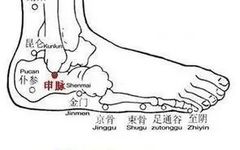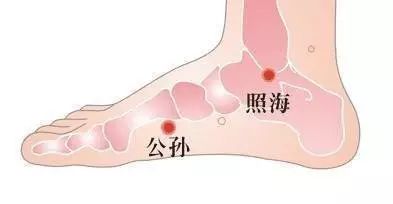
1. Zhaohai (Shining Sea) Point – Say Goodbye to Sore Throat and Insomnia
Zhaohai Point is named as such because “Zhao” means to shine, and “Hai” means vast water. This point not only treats throat swelling and pain, in conjunction with Shen Shu (Kidney Back), Guan Yuan (Origin Pass), and San Yin Jiao (Three Yin Intersection), but also regulates menstrual disorders.
Zhaohai was first mentioned in the “Classic of Acupuncture and Moxibustion”. The “Essential Prescriptions Worth a Thousand Gold” refers to it as “Liu Yin” and it belongs to the Foot Shao Yin Kidney Meridian, being one of the Eight Extraordinary Points, connecting to the Yin Qiao Vessel, with functions of nourishing the Kidney and clearing heat, as well as regulating the San Jiao (Three Burners).
Its main effects include: relieving chest tightness, dry throat, hoarseness, chronic pharyngitis, and assisting with shoulder periarthritis and insomnia.
Sun Simiao in the “Essential Prescriptions Worth a Thousand Gold” referred to this point as “Liu Yin”, indicating that if there is an issue with this point, it leads to a decrease in Kidney water, causing Kidney Yin deficiency and resulting in the rise of empty heat.
Therefore, whenever we feel discomfort in the chest, dry throat, hoarseness, or even suffer from chronic pharyngitis, we can press this point, which not only has the effect of nourishing the Kidney and clearing heat but also helps to smooth the functions of the San Jiao, achieving a dual benefit and immediate effect.

2. Shen Mai (Shen Pulse) Point – Special Treatment for Cold Sensation in the Body
Shen Mai, also known as Yang Qiao, belongs to the Foot Tai Yang Bladder Meridian. It is one of the Eight Extraordinary Points, connecting to the Yang Qiao. Located on the outer side of the foot, directly below the outer ankle, it is innervated by the sural nerve and the external ankle artery network, with functions of tonifying Yang, benefiting Qi, and draining dampness.
Its main effects include: relieving dizziness, redness and swelling of the eyes, lower back pain, and ankle joint pain, and assisting with diarrhea and indigestion.
“Lower back stiffness and leg pain” is a clear sign of cold evil invading the Bladder Meridian. Since Yang Qiao connects to the Bladder Meridian, Shen Mai is an important point of the Bladder Meridian.
Thus, Shen Mai is the ultimate Yang point; using this point can dispel internal cold evil and allow Yang Qi to reach the top, balancing the body and promoting agile movement.
Some may say, “I can’t needle, so knowing the benefits of this point is just theoretical.”
In fact, the Eight Extraordinary Points in Daoist medicine can be treated with both acupuncture and moxibustion. The method of locating this point is simple, in the depression below the inner side of the outer ankle. When the body is affected by cold evil, it tends to curl up and shiver, which in TCM is called “contraction and pulling in”. Shen Mai has the meaning of stretching the meridians, quickly mobilizing the body’s Yang Qi, allowing the cold evil to disperse.
We can usually use moxa sticks to warm or stimulate Shen Mai with our fingers. When pressing, you will feel a slight soreness and distension. During moxibustion, it should feel slightly warm; sometimes you can distinctly feel a warm current rising from your feet, instantly making you feel much more relaxed.
As autumn and winter transition, with significant temperature changes, it is also a peak season for flu. It is recommended to buy some moxa sticks to warm Shen Mai, which can prevent flu and enhance immunity, especially for the elderly or those with a cold constitution who should frequently warm this point.
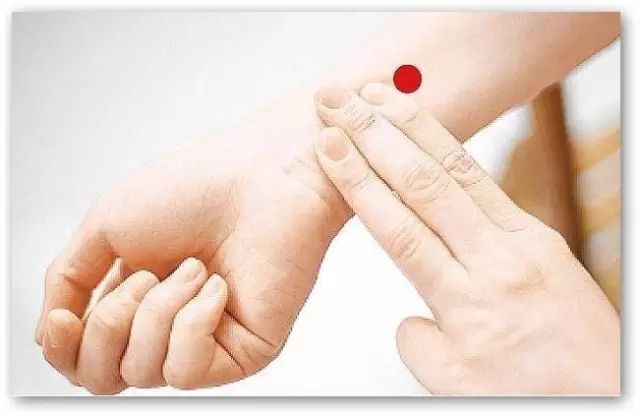
3. Nei Guan (Inner Pass) Point – Nourishing Beauty and Heart
Nei Guan was first mentioned in the “Huangdi Neijing: Ling Shu: Channels and Vessels” and is a Luo point of the Hand Jue Yin Pericardium Meridian. It benefits the heart, calms the spirit, harmonizes the stomach, descends rebellious Qi, regulates Qi, and alleviates pain.
Applicable Population: Women wishing to delay aging, middle-aged and elderly friends; those feeling depressed, anxious, or tense; patients with coronary heart disease and other acute heart conditions.
Main Effects: Can relieve hiccups, heat in the palms, elbow pain, and swelling under the armpits; treats morning sickness, motion sickness, and diarrhea. It has auxiliary effects on treating heart disease, lung diseases, and breast diseases.
Nei Guan is easy to find, located on the inner side of the arm, two inches above the wrist crease. To locate it, make a loose fist and place it palm up, then align the index, middle, and ring fingers with the wrist crease; the point where the index finger touches is Nei Guan. This point is beneficial for health and can be pressed anytime, anywhere, with a slight feeling of soreness and distension being ideal.
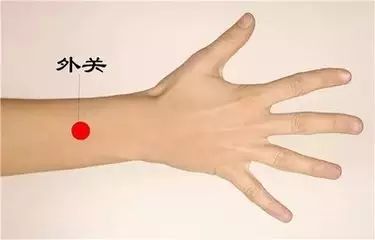
4. Wai Guan (Outer Pass) Point – The “Clever Ear Point”
Wai Guan was first mentioned in the “Huangdi Neijing: Ling Shu: Channels and Vessels” and is a Luo point of the Hand Shao Yang San Jiao Meridian, one of the Eight Extraordinary Points. It connects to the Yang Wei Vessel and has functions of clearing heat, detoxifying, relieving spasms, alleviating pain, and promoting circulation.
Applicable Population: Those who frequently travel by plane or train for business; patients with acute lumbar sprains, arthritis, or shoulder periarthritis.
Main Effects: Can prevent hearing loss, tinnitus, deafness, and relieve lower back pain. In clinical practice, it has additional uses for treating acute lumbar sprains.
Traditional Daoist medicine believes that temporary hearing issues are manifestations of insufficient Yang Qi in the body. So what role does Wai Guan play at this moment?
“Wai Guan” literally means “outer” referring to the external; “Guan” means checkpoint. Wai Guan connects to the Yang Wei, and it is a Luo point of the Hand Shao Yang San Jiao Meridian, where the Hand Shao Yang and Hand Jue Yin meridians connect.
Massaging Wai Guan can enrich the Yuan Yang Qi of the San Jiao and guide the Yuan Qi to circulate throughout the body.
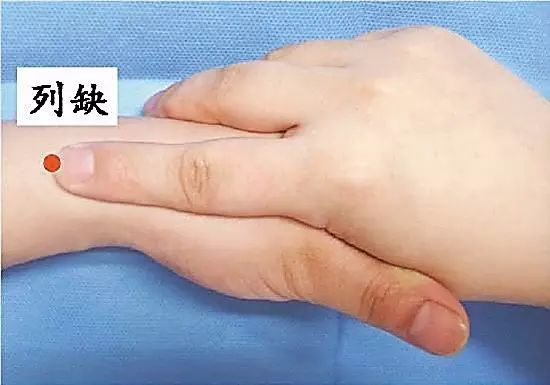
5. Lie Que (Broken Sequence) Point – Special Treatment for Stiff Neck and Migraine
Lie Que was first mentioned in the “Huangdi Neijing: Ling Shu: Channels and Vessels” and is a Luo point of the Hand Tai Yin Lung Meridian, one of the Eight Extraordinary Points, connecting to the Ren Meridian. It has functions of dispersing lung pathogens and regulating the meridians.
Applicable Population: Those who frequently experience pain in the head and neck.
Main Effects: Can quickly relieve sudden neck pain; treats stiff neck, migraine, facial paralysis, and has auxiliary effects on cold, asthma, cough, and toothache.
On the human body, Lie Que is a tool for repairing head diseases. The “Huangdi Neijing” records that Lie Que mainly treats migraines, headaches, and stiff necks.
In the “Great Compendium of Acupuncture”, there is a well-known verse about the four major points, stating: “For diseases above the neck, seek Lie Que.” This means that any ailment above the neck can be treated and adjusted using this point.
“Lie” means to display or split; “Que” means gap or void. It is one of the Eight Extraordinary Points, connecting to the Ren Meridian, with functions of dispersing lung pathogens and regulating the meridians, being a Luo point of the Hand Tai Yin Lung Meridian.
Lie Que is easy to find, located 1.5 inches above the wrist crease on the radial styloid process. To locate it, make a tiger claw with both hands, and the depression where the index finger touches is the point.
When using Lie Que, the technique mainly involves plucking. The plucking technique involves lateral rubbing and kneading at the point or area, allowing the muscles and tendons to move back and forth, with a feeling of soreness and distension being ideal. If you feel discomfort in your neck, you can stimulate Lie Que, and the discomfort will quickly diminish.
When massaging Lie Que, both hands should lightly form fists, palms facing up, resting on a table, then press, pinch, or knead as needed. During the massage, this point will feel sore or painful, with soreness being preferable.
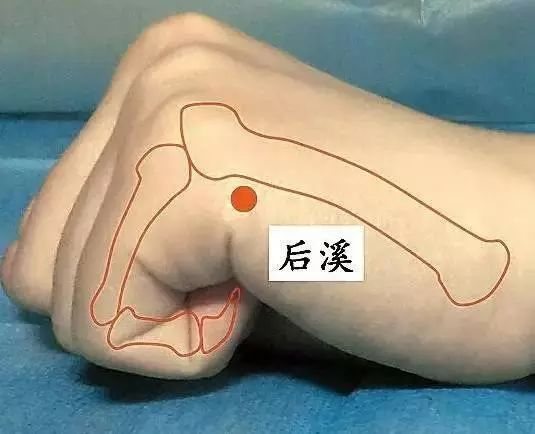
6. Hou Xi (Back Stream) Point – Governing Neck, Shoulder, and Lumbar Diseases
Hou Xi was first mentioned in the “Huangdi Neijing: Ling Shu: Ben Shu” and is a point of the Hand Tai Yang Small Intestine Meridian, also one of the Eight Extraordinary Points, connecting to the Du Meridian and Small Intestine Meridian. It has functions of relaxing the meridians, opening the orifices, and calming the spirit.
Applicable Population: Those who frequently work in front of computers; children; office workers; housewives.
Main Effects: Can prevent hunchback, neck, lumbar, and leg pain, and also has benefits for protecting vision, relieving fatigue, and replenishing Qi.
Daoist medicine places great importance on Hou Xi. It can directly connect to the Du Meridian and is a very important point among the Eight Extraordinary Points. The Du Meridian governs the Yang Qi of the entire body; when Yang Qi is abundant, the whole body thrives.
Acupuncture is a more specialized treatment method; if you are only focusing on health maintenance, you can simply use pressing and rubbing techniques on Hou Xi. Generally, after a few minutes of pressing, it can invigorate the Yang Qi of the whole body, making the body feel warm and revitalized. Pressing this point is very effective for heat in the Small Intestine Meridian and leg pain.
How to find Hou Xi? Make a fist, and the point is located at the distal end of the transverse wrist crease behind the fifth finger joint (i.e., the end of the transverse crease behind the fist).
If you are sitting in front of a computer, you can place the Hou Xi area on the edge of the table, using your wrist to roll your hands back and forth to achieve stimulation.
During the rolling, you will feel a slight soreness. This action does not require conscious effort; just take three to five minutes each day to move it around. This simple method for treating neck, shoulder, and lumbar diseases, I call rolling and rubbing Hou Xi. Persisting in this will have very good effects on the cervical and lumbar vertebrae and is also beneficial for protecting vision.
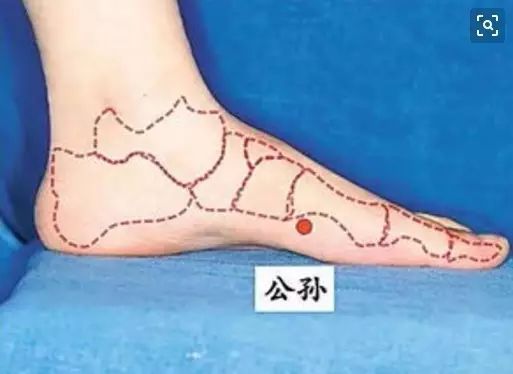
7. Gong Sun (Public Grandson) Point – The First Yang Warming Point for Menstrual Pain and Spleen-Stomach Disorders
Gong Sun was first mentioned in the “Huangdi Neijing: Ling Shu” and is a Luo point of the Foot Tai Yin Spleen Meridian, also connecting to the Yang Ming. It is one of the Eight Extraordinary Points, connecting to the Chong Meridian. It has functions of strengthening the spleen, benefiting the stomach, regulating the Chong Meridian, and eliminating distension.
Applicable Population: Women with menstrual pain, those frequently experiencing unexplained abdominal pain, heart pain, stomach pain, and chest pain.
Main Effects: Can relieve menstrual pain, and has auxiliary effects on stomach pain, vomiting, abdominal pain, diarrhea, and dysentery.
We are all descendants of the Yellow Emperor, but few know his name. The “Records of the Grand Historian” states that the Yellow Emperor’s surname is Gong Sun, and his name is Xuanyuan. This point is named after the Yellow Emperor, symbolizing the emperor’s central position governing all.
Gong Sun is a Luo point of the Spleen Meridian, connecting to the Chong Meridian. The spleen governs the earth, located centrally in the body, responsible for the transformation and transportation of nutrients, and is the foundation of postnatal life, aligning with the principle of governance.
Gong Sun is a Luo point of the Spleen Meridian, associated with the spleen and stomach, and directly connects to the Chong Meridian located in the chest and abdomen, thus it has the effect of treating various disorders of the spleen, stomach, and abdominal area. The Chong Meridian is known as the “sea of the five organs and six bowels”; the “Ling Shu” states that the Chong Meridian is the “sea of the twelve meridians”, the “blood sea” of the human body.
In my past health lectures, I have often discussed the wonderful uses of Gong Sun, focusing on treating various diseases of the chest and abdomen. Revisiting this, I have gradually discovered that this point has other important functions yet to be fully utilized, such as treating menstrual pain.
We often describe beautiful girls as “charming and attractive”, but in recent years, based on my clinical experience, especially fashionable girls frequently suffer from menstrual pain, primarily due to cold exposure. While these beautiful girls are indeed attractive, their beauty may not be “charming” but rather “cold-inducing”.
Menstrual pain is a highly prevalent gynecological condition, often caused by poor dietary and dressing habits. Nowadays, many fashionable girls prioritize appearance, wearing tight and short clothing, neglecting warmth.
Many girls who have experienced menstrual pain know that there are currently no effective treatments, relying only on painkillers for relief, which not only fails to cure the pain but can also harm the reproductive system. If not properly cared for at a young age, it may pose significant risks for future pregnancies.
Daoist medicine believes that treating all gynecological diseases should start with the spleen and stomach, especially for menstrual irregularities, the stomach should be prioritized.
The spleen governs blood and is responsible for transformation. During menstrual pain, the blood is dark and may contain clots; after two to three days of clot expulsion, the pain symptoms will alleviate, but it recurs monthly. Cold exposure to the lower abdomen or excessive consumption of cold drinks leads to spleen and stomach deficiency, preventing proper transformation and transportation, which can cause menstrual pain, sometimes accompanied by vomiting, nausea, and headaches.
Why does Gong Sun have such miraculous effects? In TCM, Gong Sun connects to the Chong Meridian, with the Du, Ren, and Chong meridians all originating from the uterus, among which the Chong and Ren meridians are crucially linked to women’s menstruation and reproduction, as the Chong Meridian contains the Qi and blood of the twelve meridians.
Regulating Gong Sun is equivalent to a comprehensive dredging of the Qi and blood of the twelve meridians, having the effect of moving stagnation and alleviating pain. I recommend women with menstrual pain to frequently press Gong Sun and drink some “Daughter’s Red” (not wine, as introduced in “Using it Wisely”); this will enhance the effect of treating menstrual pain.
Location: Gong Sun is located on the inner edge of the foot, just below the base of the first metatarsal. Alternatively, it can be found at the front lower edge of the first metatarsal base, at the red-white flesh junction, one inch behind the Tai Bai (Great White) point. Or at the inner lower edge of the first metatarsal base, at the red-white flesh junction.
When adjusting the body using Gong Sun, there is no need to strictly follow the treatment location; use your own tenderness as a guide.
I generally consider Gong Sun as a region; at the back of the big toe, there is a large metatarsal bone along the inner side. By pressing along this bone, the point where you feel the most soreness or pain is your own Gong Sun point.
When using Gong Sun, moxibustion can be applied, using moxa sticks to warm this point for about 15 minutes, which can also warm and tonify the Spleen Yang.During moxibustion, there is a trick called sparrow pecking moxibustion. When the skin feels slightly hot, remove it immediately, then continue moxibustion. Repeating this, like a bird pecking, can effectively protect the skin.
Gong Sun is known as the first Yang warming point beneath our feet; this small point can spare us from the past suffering of needing to go to the hospital for medication or injections. As long as we pay more attention to Gong Sun, we can surely nourish our postnatal foundation.
If you find this article beneficial, please share it so that more people can learn about Traditional Chinese Medicine!
Feng Family
Committed to Sharing Traditional Chinese Medicine
Health Maintenance WeChat Account
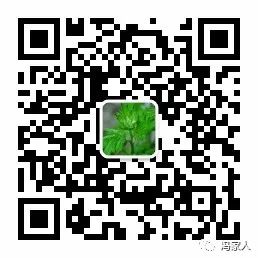
Long press the QR code to follow
Disclaimer: The images and text are sourced from the internet, and the copyright belongs to the original author. If there are any copyright issues with the reprint, please contact us for removal. The various prescriptions, acupuncture formulas, etc., mentioned in the text are for reference and learning only and should not be used as prescriptions; please do not use them blindly!

